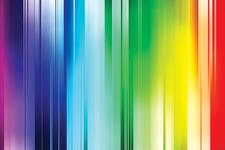Retouching with Perl
Color Play

© Saniphoto, Fotolia
In many cases, whole series of digital images need the same kind of modifications, which forces the photo-grapher to repeat the same steps time and time again in GIMP. Have you ever considered retouching in Perl?
Before posting snapshots I've taken with my digital camera to the web, I used to go through the same old steps with GIMP. First, I'd reduce the image size to a width of 1,000 pixels because the image size my Nikon D70 gives me is just too much for the web and uploading the images takes too long. Also, to improve the contrast, correct any color casting, and make images tack-sharp with GIMP's Sharpen function, I typically select a value of 20.
As you might know, GIMP has a convenient scripting interface that lets users automate recurring tasks, and you can even run it at the command line without launching the GUI. GIMP developers have made some fairly significant changes to the whole API and nothing works the way it used to. Fortunately, GIMP documents the functions completely and thoroughly in the Xtns | Procedure Browser menu.
The standard interface is implemented in the rocket scientist's favorite programming language, Scheme.
[...]
Buy this article as PDF
(incl. VAT)
Buy Linux Magazine
Subscribe to our Linux Newsletters
Find Linux and Open Source Jobs
Subscribe to our ADMIN Newsletters
Support Our Work
Linux Magazine content is made possible with support from readers like you. Please consider contributing when you’ve found an article to be beneficial.

News
-
Parrot OS Switches to KDE Plasma Desktop
Yet another distro is making the move to the KDE Plasma desktop.
-
TUXEDO Announces Gemini 17
TUXEDO Computers has released the fourth generation of its Gemini laptop with plenty of updates.
-
Two New Distros Adopt Enlightenment
MX Moksha and AV Linux 25 join ranks with Bodhi Linux and embrace the Enlightenment desktop.
-
Solus Linux 4.8 Removes Python 2
Solus Linux 4.8 has been released with the latest Linux kernel, updated desktops, and a key removal.
-
Zorin OS 18 Hits over a Million Downloads
If you doubt Linux isn't gaining popularity, you only have to look at Zorin OS's download numbers.
-
TUXEDO Computers Scraps Snapdragon X1E-Based Laptop
Due to issues with a Snapdragon CPU, TUXEDO Computers has cancelled its plans to release a laptop based on this elite hardware.
-
Debian Unleashes Debian Libre Live
Debian Libre Live keeps your machine free of proprietary software.
-
Valve Announces Pending Release of Steam Machine
Shout it to the heavens: Steam Machine, powered by Linux, is set to arrive in 2026.
-
Happy Birthday, ADMIN Magazine!
ADMIN is celebrating its 15th anniversary with issue #90.
-
Another Linux Malware Discovered
Russian hackers use Hyper-V to hide malware within Linux virtual machines.

